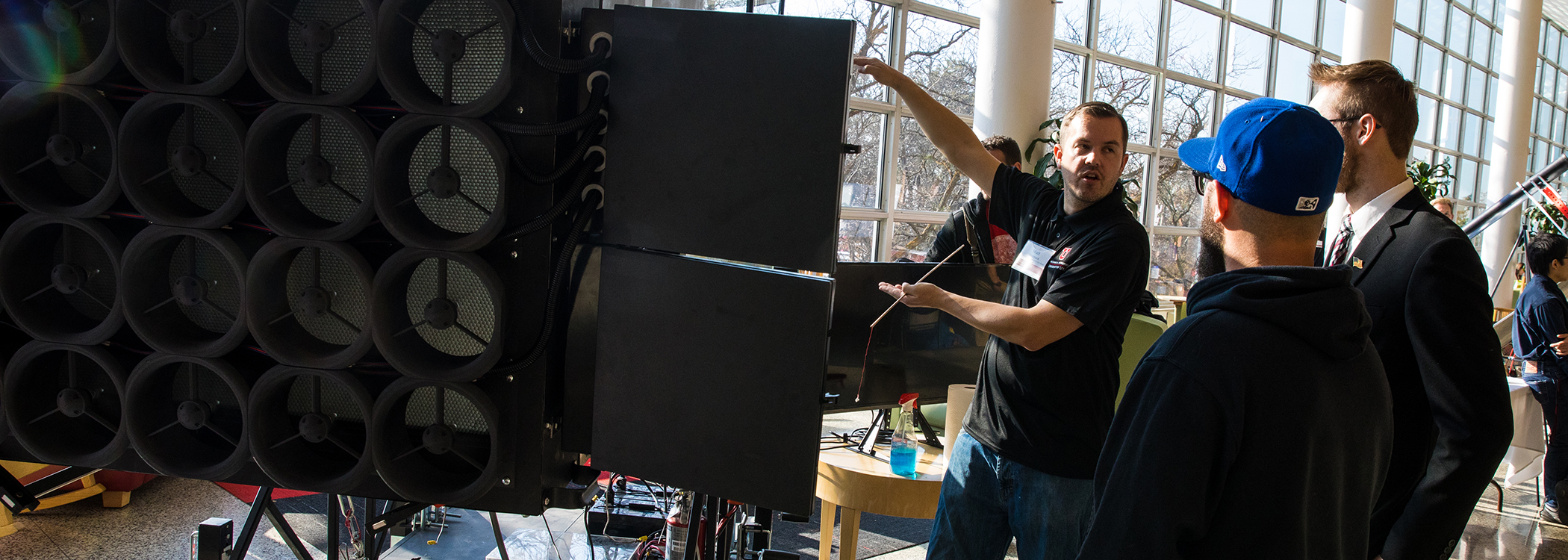
CHECK OUT SOME OF OUR PAST CAPSTONE PROJECTS
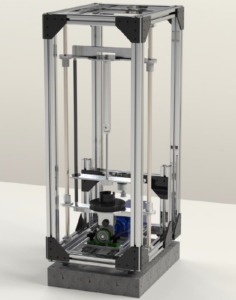 A generant compaction station capable of shaking, rotating, and pressing. The machine will be a lab tool used by Autoliv for testing the best combination of methods to compress the generant material.
A generant compaction station capable of shaking, rotating, and pressing. The machine will be a lab tool used by Autoliv for testing the best combination of methods to compress the generant material.
Team: Edward Santiago, Dallen Unruh, Adam Jost, Jackson Vanderberghe. Drew Prescott, Evan Peck
Advisor: Dr. Pedro Huebner
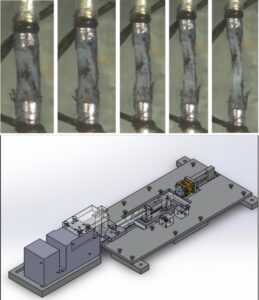 The Head Injury and Vessel Biomechanics Lab aims to analyze and characterize injury-induced changes in cerebral vessel behavior. Dr. Ken Monson’s lab uses a tester to perform tension tests on blood vessels and gather strain values using digital image correlation (DIC) techniques. The current tester can gather strain values in two dimensions; however, three-dimensional strain values are more valuable to the research of the lab. Therefore, we are tasked with modifying the tester to gather and analyze strain values around the full circumference of the blood vessel while it undergoes testing.
The Head Injury and Vessel Biomechanics Lab aims to analyze and characterize injury-induced changes in cerebral vessel behavior. Dr. Ken Monson’s lab uses a tester to perform tension tests on blood vessels and gather strain values using digital image correlation (DIC) techniques. The current tester can gather strain values in two dimensions; however, three-dimensional strain values are more valuable to the research of the lab. Therefore, we are tasked with modifying the tester to gather and analyze strain values around the full circumference of the blood vessel while it undergoes testing.
Team: Audrey Pohl (lead), Jasmine Knowles, Julia Olsen, Andre Otero, Ethan Albrechtsen, Arham Irshad
Advisor: Dr. Ken Monson
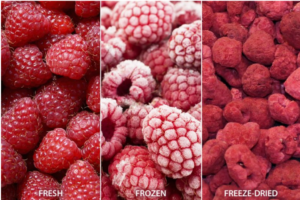 We are seeking to reduce over drying in our sponsors product, enabling them to run more cycles, and create more product in less time. We are doing this by measuring the change in mass of the product in order to measure moisture content. This will ensure that once the product is sufficiently dried we are able to remove it from the drying chamber in as little time as possible.
We are seeking to reduce over drying in our sponsors product, enabling them to run more cycles, and create more product in less time. We are doing this by measuring the change in mass of the product in order to measure moisture content. This will ensure that once the product is sufficiently dried we are able to remove it from the drying chamber in as little time as possible.
Team: John Livingston (lead), Branden Webb, Emerson Powell, Bennie Okamoto
Leads: Dr. Sameer Rao, Dr. Keunhan Park
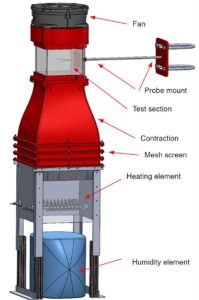 This project involves working under the supervision of Dr. Eric Pardyjak funded by the Office of Naval Research on the multi-disciplinary FATIMA (Fog and Turbulent Interactions in the Marine Atmosphere) research project. The team objective is to design a portable wind tunnel calibration unit for a liquid water content (LWC) probe. This probe will be measuring the water content in fog particles to better understand the implications of both the spatial variability and the modeling of the marine fog to improve its predictability.Additionally, the project consists of designing a mount for the LWC probe to be attached to a 15-meter aluminum meteorological tower typically used in atmospheric field testing. This mount must be able to withstand high wind speeds that could be experienced during field testing as well as the blunt force of attaching the mount to the tower with a U-bolt. The mount should also be universal so that it can be used during future research projects.Project deliverables include design specifications that require building a small wind tunnel that is under 20.4 kg (45 lbs) with an adjustable wind speed between 2-10 m/s, an adjustable temperature of 10℃ above ambient temperature or room temperature at the field test site, and an adjustable humidity to about 40-50% humidity above ambient. The wind tunnel needs to be able to be safely transported long distances without damaging the electrical equipment, so the design being portable is very important.
This project involves working under the supervision of Dr. Eric Pardyjak funded by the Office of Naval Research on the multi-disciplinary FATIMA (Fog and Turbulent Interactions in the Marine Atmosphere) research project. The team objective is to design a portable wind tunnel calibration unit for a liquid water content (LWC) probe. This probe will be measuring the water content in fog particles to better understand the implications of both the spatial variability and the modeling of the marine fog to improve its predictability.Additionally, the project consists of designing a mount for the LWC probe to be attached to a 15-meter aluminum meteorological tower typically used in atmospheric field testing. This mount must be able to withstand high wind speeds that could be experienced during field testing as well as the blunt force of attaching the mount to the tower with a U-bolt. The mount should also be universal so that it can be used during future research projects.Project deliverables include design specifications that require building a small wind tunnel that is under 20.4 kg (45 lbs) with an adjustable wind speed between 2-10 m/s, an adjustable temperature of 10℃ above ambient temperature or room temperature at the field test site, and an adjustable humidity to about 40-50% humidity above ambient. The wind tunnel needs to be able to be safely transported long distances without damaging the electrical equipment, so the design being portable is very important.